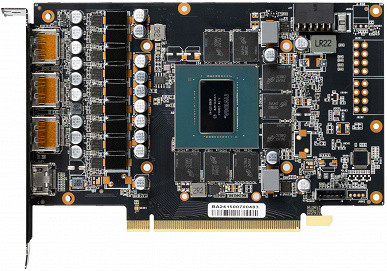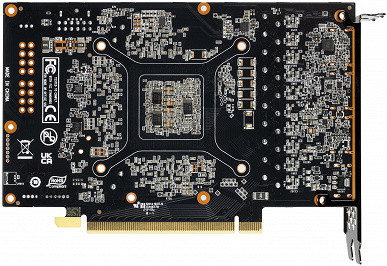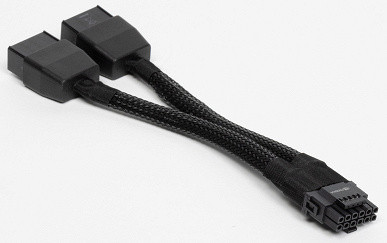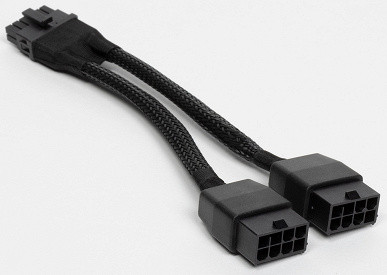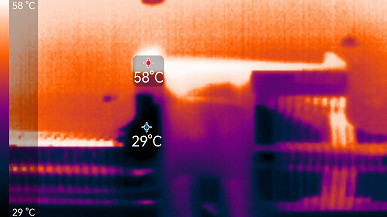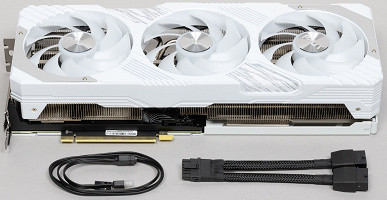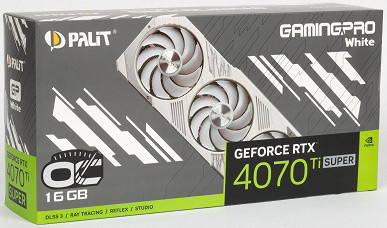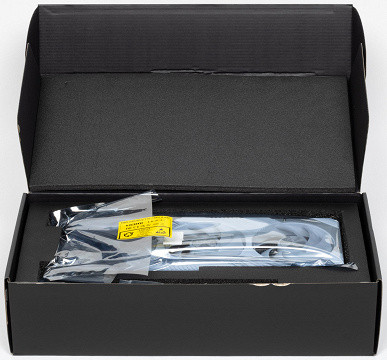Briefly about the main thing
After the release of updates with the Super suffix, there was some lull in the line of video cards based on Nvidia GPUs: new products appeared on shelves and in stores, the offer competed with previously released models.
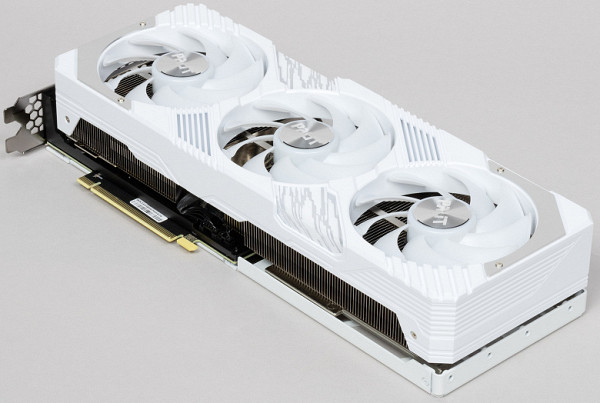
Nowadays it is really difficult to understand the numerous suffixes and names of Nvidia video cards. For example, how much has the Super model improved performance compared to the Ti, and should you consider purchasing the older version without suffixes? We aim to answer questions like these in our core coverage of new gaming-grade GPUs. In our today's review we will look at a serial video card based on the GeForce RTX 4070 Ti Super from Palit. The GeForce RTX 4070 Ti Super ranks fourth in terms of performance in the GeForce RTX 40 line.
We will focus on the GamingPro series model, which offers the ability to customize the CO housing. This model can also be distinguished by its unique cooler color.
Before we begin detailed tests, we will provide brief information about the performance of the entire line to which the video card we are studying belongs, as well as about its competitors. We will subjectively evaluate them on a seven-gradation scale.
Games without ray tracing (classic rasterization):

For many video cards at 2.5K and even 4K resolutions in classic games, the overall performance is no longer limited by the graphics accelerator, but by other system components, most often the processor. This also applies to the Palit card in question (and all other GeForce RTX 4070 Ti Super-based graphics cards). Using this card, you can achieve smooth gaming dynamics in resolutions up to 4K, even at maximum graphics settings (except RT), while ensuring complete gaming comfort.
Games using ray tracing and DLSS/FSR/XeSS:
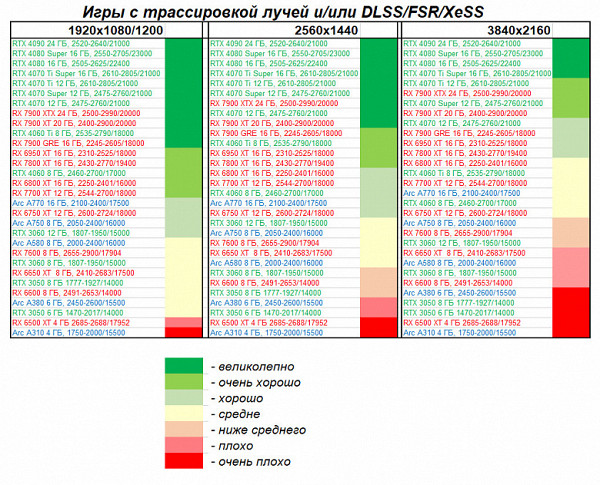
Enabling Ray Tracing (RT) technology reduces performance, but using Nvidia DLSS and AMD FSR (or Intel XeSS) technologies in ray-traced games can significantly compensate for this effect. Thus, for powerful cards, including the GeForce RTX 4070 Ti Super, all previous performance estimates remain relevant. In addition, even the GeForce RTX 4070 Ti (without the Super suffix) is superior to AMD's latest generation flagship graphics card, the Radeon RX 7900 XTX.
Card characteristics
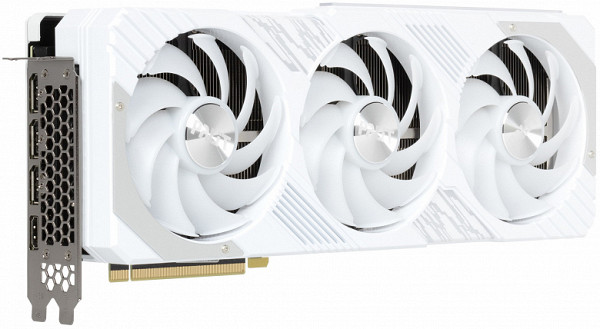

Palit Microsystems, known as Palit, was founded in 1988 in Taipei/Taiwan, China. Its headquarters are in Taipei and its major logistics center is located in Hong Kong. The company's second office, responsible for sales in Europe, is located in Germany. Production facilities are located in China. Palit has been present on the Russian market since 1995. Products were first sold without a brand and then, starting in 2000, under the Palit brand. In 2005, the company acquired the Gainward brand and assets after the latter's bankruptcy, which led to the creation of the Palit Group holding. An office was also opened in Shenzhen, which handles sales in China. Currently, there are also other trademarks and brands within the Palit Group.
| Palit GeForce RTX 4070 Ti Super GamingPro White OC 16 GB 256-bit GDDR6X | ||
|---|---|---|
| Parameter | Meaning | Nominal value (reference) |
| GPU | GeForce RTX 4070 Ti Super (AD103) | |
| Interface | PCI Express x16 4.0 | |
| GPU operating frequency (ROPs), MHz | 2655(Boost)—2790(Max) | 2610(Boost)—2805(Max) |
| Memory operating frequency (physical (effective)), MHz | 2625 (21000) | 2625 (21000) |
| Memory bus width, bits | 256 | |
| Number of computational units in the GPU | 66 | |
| Number of operations (ALU/CUDA) in block | 128 | |
| Total number of ALU/CUDA blocks | 8448 | |
| Number of texturing units (BLF/TLF/ANIS) | 262 | |
| Number of rasterization units (ROP) | 96 | |
| Number of Ray Tracing blocks | 66 | |
| Number of tensor blocks | 268 | |
| Dimensions, mm | 330×130×65 | 310×130×70 |
| Number of slots in the system unit occupied by a video card | 4 | 4 |
| PCB color | black | black |
| Peak power consumption in 3D, W | 276 | 285 |
| Power consumption in 2D mode, W | 40 | 40 |
| Energy consumption in sleep mode, W | eleven | eleven |
| Noise level in 3D (maximum load), dBA | 28.1 | 34.0 |
| Noise level in 2D (video viewing), dBA | 18.0 | 18.0 |
| Noise level in 2D (idle), dBA | 18.0 | 18.0 |
| Video outputs | 1×HDMI 2.1, 3×DisplayPort 1.4a | 1×HDMI 2.1, 3×DisplayPort 1.4a |
| Multiprocessing support | No | |
| Maximum number of receivers/monitors for simultaneous image output | 4 | 4 |
| Power: 8-pin connectors | 0 | 0 |
| Power: 6-pin connectors | 0 | 0 |
| Power: 16-pin connectors | 1 | 1 |
| Weight of the card with delivery set (gross), kg | 2.13 | 2.5 |
| Card weight (net), kg | 1.6 | 2.0 |
| Maximum resolution/frequency, DisplayPort | 3840×2160@144 Hz, 7680×4320@60 Hz | |
| Maximum resolution/frequency, HDMI | 3840×2160@144 Hz, 7680×4320@60 Hz |
Memory
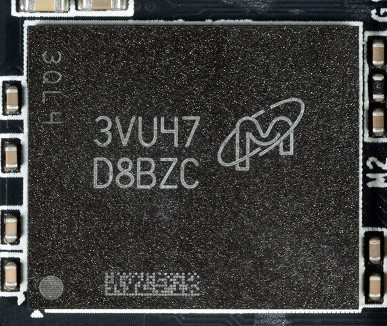
The video card has 16 GB of GDDR6X SDRAM memory, divided between 8 chips on the front side of the PCB. Memory chips manufactured by Micron (model MT61K512M32KPA-21/D8BZC) are designed to operate at nominal frequencies up to 2625 (21000) MHz.
Card features and comparison with Palit GeForce RTX 4070 Ti GamingPro OC (16 GB)
We're comparing this card with another, more affordable model from the same manufacturer to make sure they're basically identical, except for differences in the cooling system. In addition, the older model has a backlight controller and the ability to synchronize with the motherboard.
The core of this video card is labeled AD103-275, and its release date falls in the 6th week of 2024, which indicates that the die was produced this winter.
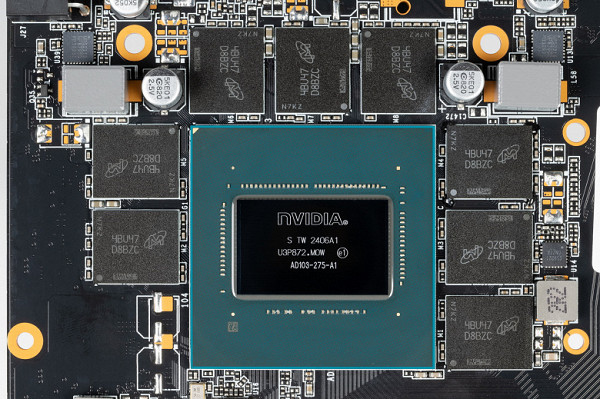
On the right side of the card we notice connectors similar to those used for the 8-pin power connectors. In fact, they are designed to connect powerful external fans in systems using professional versions of such video cards. It is important to note that the same GPUs are used for gaming and professional video cards; their differences can only be in the amount of memory, configuration of working units and software.
The total number of power phases for the Palit GeForce RTX 4070 Ti Super GamingPro White OC card is 11 (9+2).
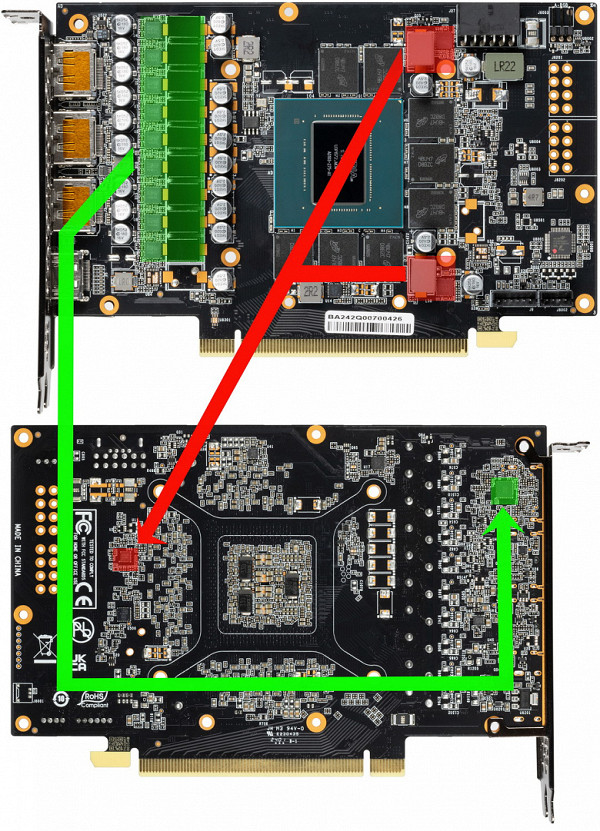
In the power diagram, the cores are highlighted in green and the memories in red. All PWM controllers are located on the reverse side of the PCB.
The 9 phases of core power are controlled by the uP9512R PWM controller from uPI Semiconductor. This controller is capable of controlling up to 12 phases.
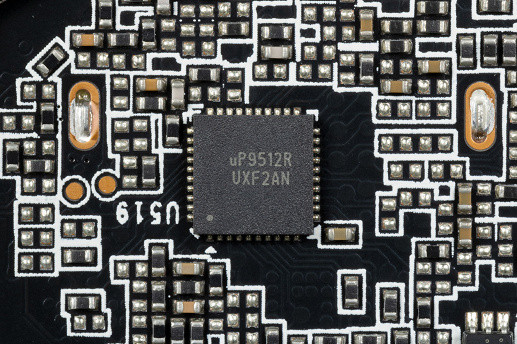
The power supply for the memory chips is controlled by the uP9529Q PWM controller (uPI Semiconductor).
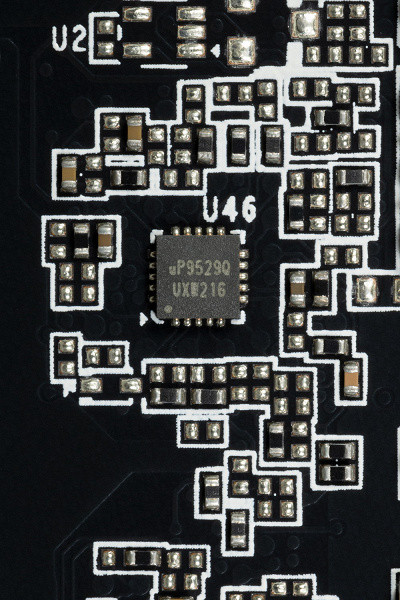
The power converter uses DrMOS transistor assemblies — in this case MP87990 (Monolith Power Systems), each of which is rated at a maximum of 70 A.
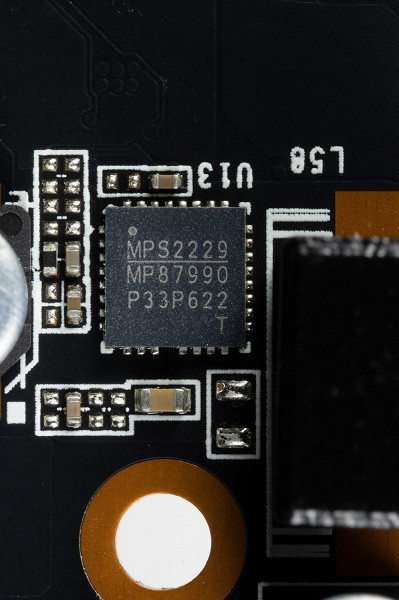
Also on the back of the board there is an NCP45491 (On Semi) controller, which is responsible for monitoring the card (monitoring voltages and temperatures).
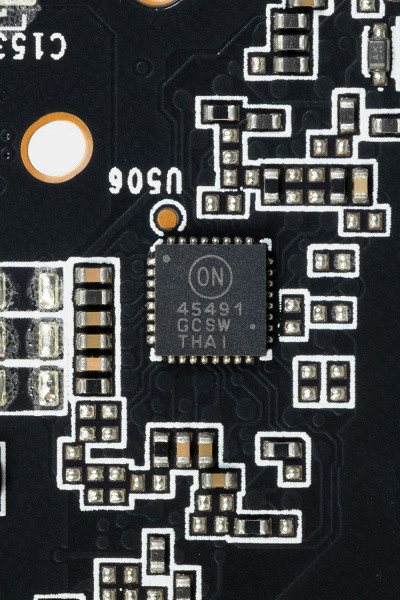
The task of controlling the backlight is assigned to the Holtek controller.
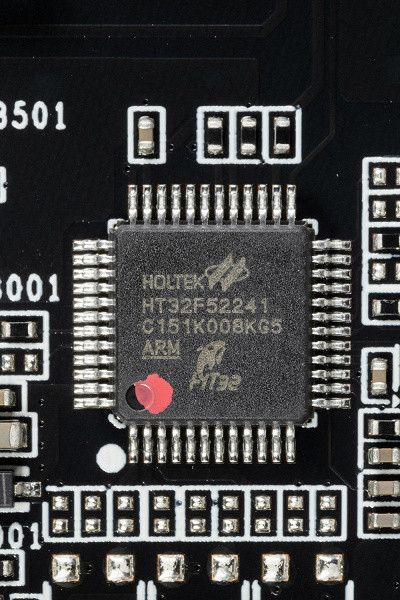
The standard memory frequency corresponds to the reference, and the Boost core frequency is slightly higher than the reference by 1.7%. However, the maximum core frequency is even lower than the reference one. As a result of testing in games, the performance increase relative to the reference card averaged 1.1%, which suggests that the “OC” suffix on the card is more likely for aesthetics.
According to test results, the power consumption of the Palit card reached 276 W.
The power consumption limit of this card can be increased to 105%. My manual overclocking with an increase in the consumption limit led to maximum frequencies of 2940/23656 MHz, which gave an average increase in performance in games at 4K resolution by almost 4% relative to the reference values. The power consumption of the card increased to 280 W, and at its peak reached 305 W.
The Palit card is powered via a 16-pin PCIe 5.0 (12VHPWR) connector.

The card is supplied with an adapter for such a connector from two ordinary 8-pin ones (well known to everyone).
Although this card consumes little and the load on the adapter remains small, we still recommend purchasing a full ATX 3.0 power supply with a 12VHPWR connector and a cable containing 16 pins for newer generations of video cards.
It should be noted that this model has decent dimensions, especially in thickness, which is 6.5 cm. As a result, the video card occupies 4 slots in the system unit.

The GeForce RTX 4070 Ti Super does not support SLI multi-graphics configuration technology, and also does not have a special connector on the top end for this purpose.
The operation of the card is controlled using the proprietary ThunderMaster utility.

The overclocking panel allows you to adjust the card's operating frequencies, as well as set auto overclocking

Fan control panel: three fans are divided into 2 blocks (2 outer + 1 central), they can be controlled separately

Card Status Dashboard
Heating and cooling
We notice that the cooler has a pass-through airflow that goes through the tail of the heatsink. The main element of the cooling system is a large multi-section nickel plated radiator with heat pipes that effectively transfer heat to the radiator fins.
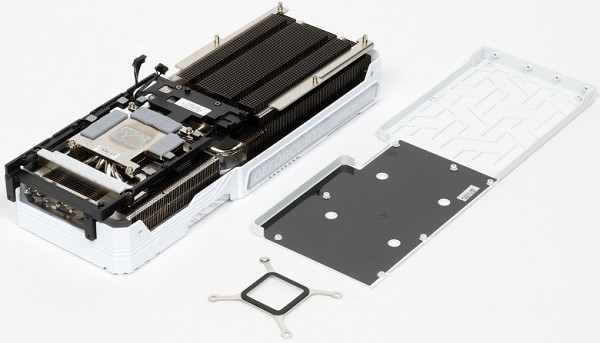
The heat pipes are hard-soldered to a large nickel-plated copper plate, which cools both the core and memory chips through special thermal pads. To effectively cool the VRM power converters, there is a separate sole mounted on a massive frame, which is rigidly connected to the radiator, which also serves as a rigidity element for the entire structure.

The backplate acts as a PCB protector and is an integral part of the overall design concept.
Above the radiator there is a casing with three fans with a diameter of 100 mm, each of which is equipped with 9 blades and operates at the same speed. By default, the fans operate synchronously, but using the ThunderMaster program you can configure the central and two outer fans to operate separately.

The radiator fins are created using Y Formula Fins technology. They have different rotation angles that are optimized for efficient air flow and increase the heat transfer area.

When the load on the video card is low, the fans stop if the GPU temperature drops below 50 degrees and the memory chip temperature drops below 80 degrees. After loading the video driver and polling the operating temperature, the fans turn off.
Temperature monitoring:
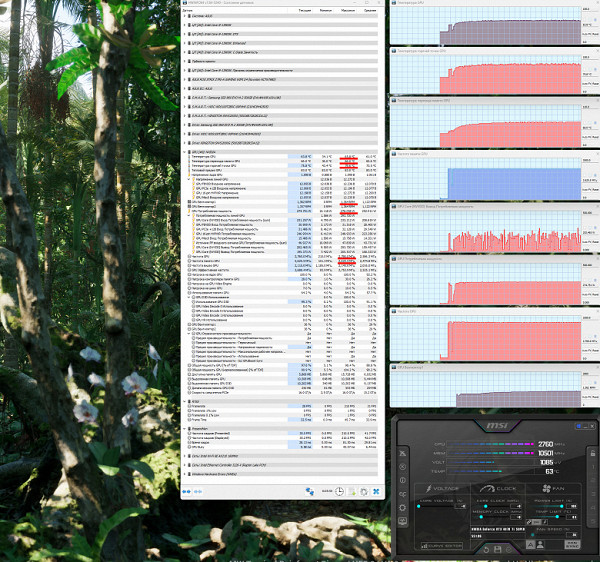
After two hours of testing under maximum load, the maximum core temperature did not exceed 66 degrees (the hottest point was 79 °C), and the temperature of the memory chips was 66 degrees. This is an excellent indicator for video cards of this level. The card's power consumption reached 276 W, which remains within the safe range for GDDR6X memory, whose heating limit is 105 °C.
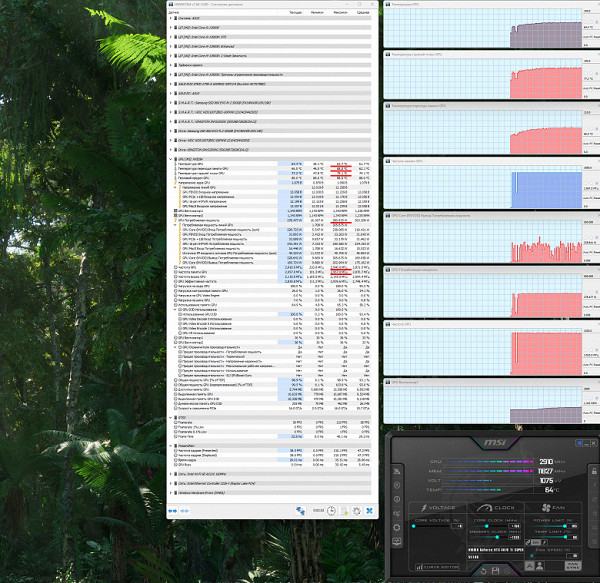
With manual overclocking, the heating and noise parameters remained virtually unchanged (66/79/68 °C), the maximum consumption increased to 280 W (305 W peak).
We recorded and sped up an 8-minute test by 50 times.
The maximum heating was observed in the central part of the PCB and at the PCIe connector.
Do not forget that the heat generated by the card remains inside the system unit, so using a case with good ventilation is highly desirable.
Noise
The noise measurement technique involves soundproofing and dampening the room to reduce reverberation. The system unit in which the video card noise is measured does not have fans and is not a source of mechanical noise. The background noise level is 18 dBA — this is the noise level in the room and the sound level meter. Measurements are taken at a distance of 50 cm from the video card at the level of the cooling system.
Measurement modes:
- Idle mode in 2D: Internet browser with the site iXBT.com, Microsoft Word window, a number of Internet communicators.
- 2D Movie Mode: Uses SmoothVideo Project (SVP) for hardware decoding with intermediate frame insertion.
- 3D mode with maximum load on the video card: the FurMark test is used.
Noise level rating:
- Less than 20 dBA: relatively silent.
- 20 to 25 dBA: very quiet.
- From 25 to 30 dBA: quiet.
- From 30 to 35 dBA: clearly audible.
- From 35 to 40 dBA: loud, but tolerable.
- Above 40 dBA: very loud.
In idle mode in 2D, the temperature did not exceed 35 °C, the fans did not work, and the noise level corresponded to the background level — 18 dBA.
When watching a movie with hardware decoding, the situation did not change.
At maximum load in 3D, temperatures reached 66/79/66 °C (core/hot spot/memory). At the same time, the fans operated at a speed of 1364 rpm, and the noise level increased to 28.1 dBA — this is quiet.
Noise spectrogram:

Backlight and self-printing of the casing
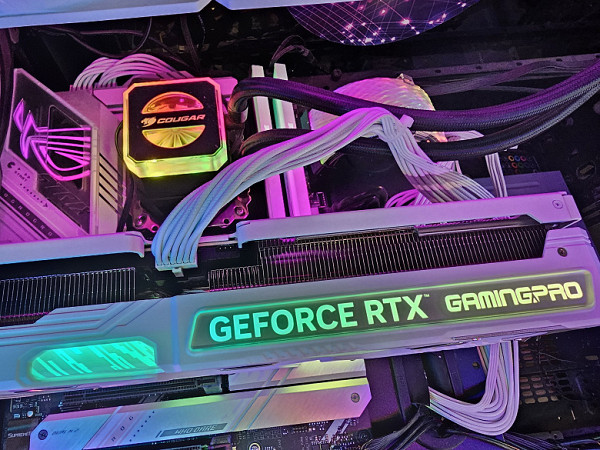
The card has illuminated diagonally located wide stripes on the front side of the CO casing, and the logo and series name on the upper end are also illuminated.-

The backlight modes, including turning them off, are controlled by the same ThunderMaster utility.
It is possible to save the selected mode in the card itself, that is, if you wish, you can configure the backlight once and not run the program again.
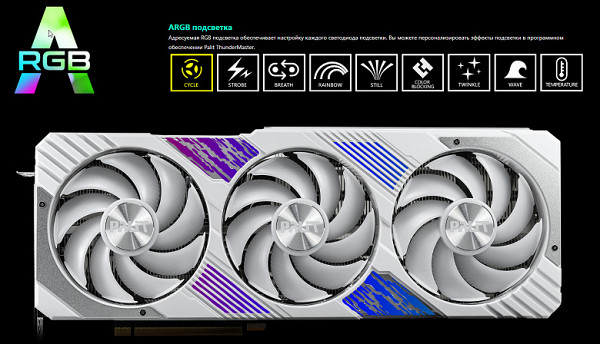
In addition, using the cable that the manufacturer includes in the package, you can synchronize the backlight with the motherboard and implement control using the motherboard utility.

Note that the card independently detects the connection of this cable, and the backlight will be synchronized by default (launching ThunderMaster is not required).

This is the “Maker” concept, which allows you to create your own CO housing design.

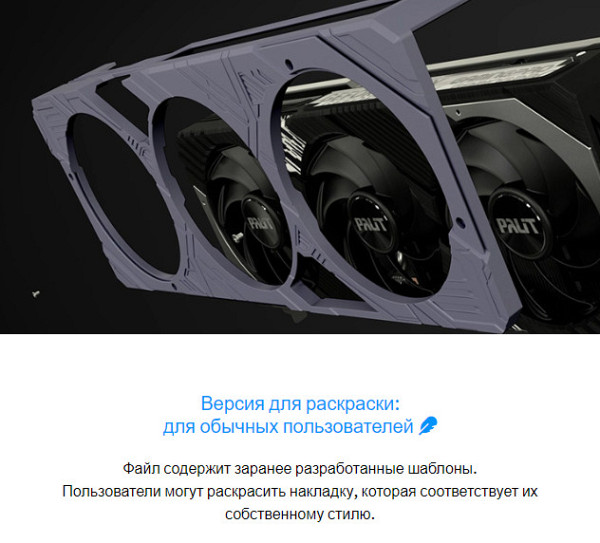
Moreover, you can add something of your own, change the template, be creative, save it as projects, then take them to 3D printing or print them on your 3D printer, then color them...

Then you just need to unscrew the four screws on the front cover, remove the holders and install your version of the casing.

Then you just need to unscrew the four screws on the front cover, remove the holders and install your version of the casing.
Delivery and packaging
In addition to the usual quick user guide, the kit for this video card also includes a power adapter and a cable for synchronizing the backlight with the motherboard. However, the manufacturer decided not to include a collapsible stand.
conclusions
The Palit GeForce RTX 4070 Ti Super GamingPro White OC (16 GB) is an elegant high-end graphics card that offers top-end capabilities (it currently ranks fourth in terms of performance among Nvidia gaming accelerators). Its power is in the middle between the GeForce RTX 4070 Ti and GeForce RTX 4080. This model is designed to fill the gap between the new GeForce RTX 4070 Super and GeForce RTX 4080 Super after the GeForce RTX 4070 Ti and GeForce RTX 4080 were withdrawn from the market.
The maximum power consumption of the Palit card is 276 W. Its cooling system is powerful, efficient and silent. Due to the limitation of consumption, overclocking does not bring significant benefits. The dimensions of this model are 33 cm in length and 13 cm in height, and the thickness of the video card occupies 4 slots in the case. The standard set of video outputs includes 3 DP ports and 1 HDMI port.

The Palit card is equipped with a 16-pin PCIe 5.0 power connector. Although the package includes an adapter for connecting PCIe 2.0 power connectors (with 2 such connectors), it is recommended to use ATX 3.0 power supplies with full PCIe 5.0 power support (with a 12VHPWR cable). The supplied power adapter should not be bent directly past the 16-pin connector.
The highlight of this card is the ability to replace the plastic cooler casing. Using the «Author» concept and the 3D design options offered by Palit, you can create your own unique casing using a 3D printer and paints. It is also worth noting the white color of the card, which goes well with the backlight, which is customizable at the user’s request and synchronized with the motherboard.
The manufacturer provides a 3-year warranty for this card.
The GeForce RTX 4070 Ti Super is capable of gaming at resolutions up to 4K with maximum graphics quality in both classic non-RT and ray-traced games, even without DLSS support.
The card also supports the HDMI 2.1 standard, which allows you to output 4K images at up to 120 FPS or 8K resolution using a single cable. In addition, there is support for hardware decoding of video data in AV1 format and RTX IO technology for quickly transferring and decompressing data from storage devices directly to the GPU. However, according to the DisplayPort standard, the card only supports version 1.4a, while some competitors in the Radeon RX 7000 family already support DisplayPort 2.1 UHBR13.5, which gives them an advantage in delivering images at 4K at 240 Hz without streaming compression. one cable.


